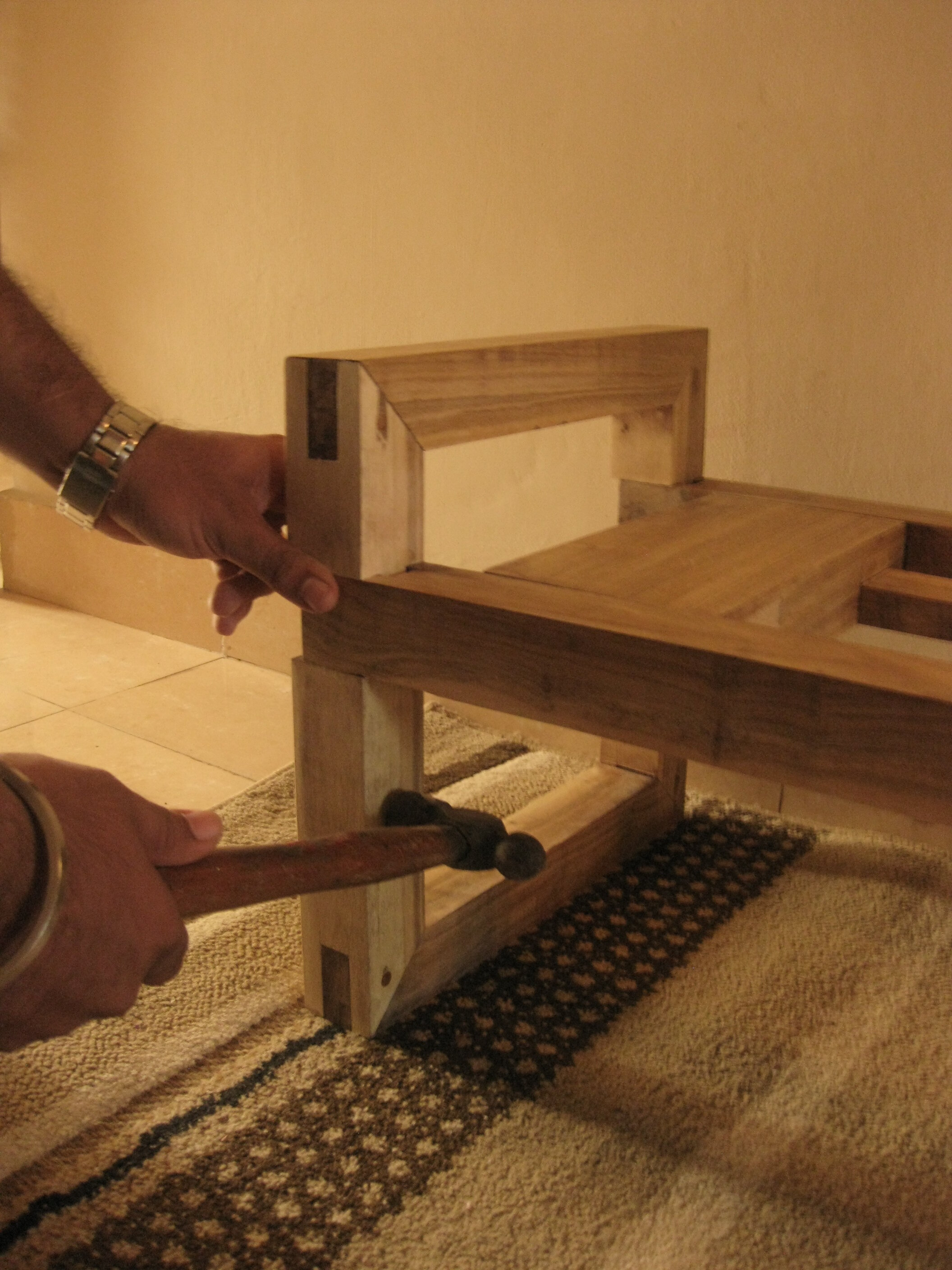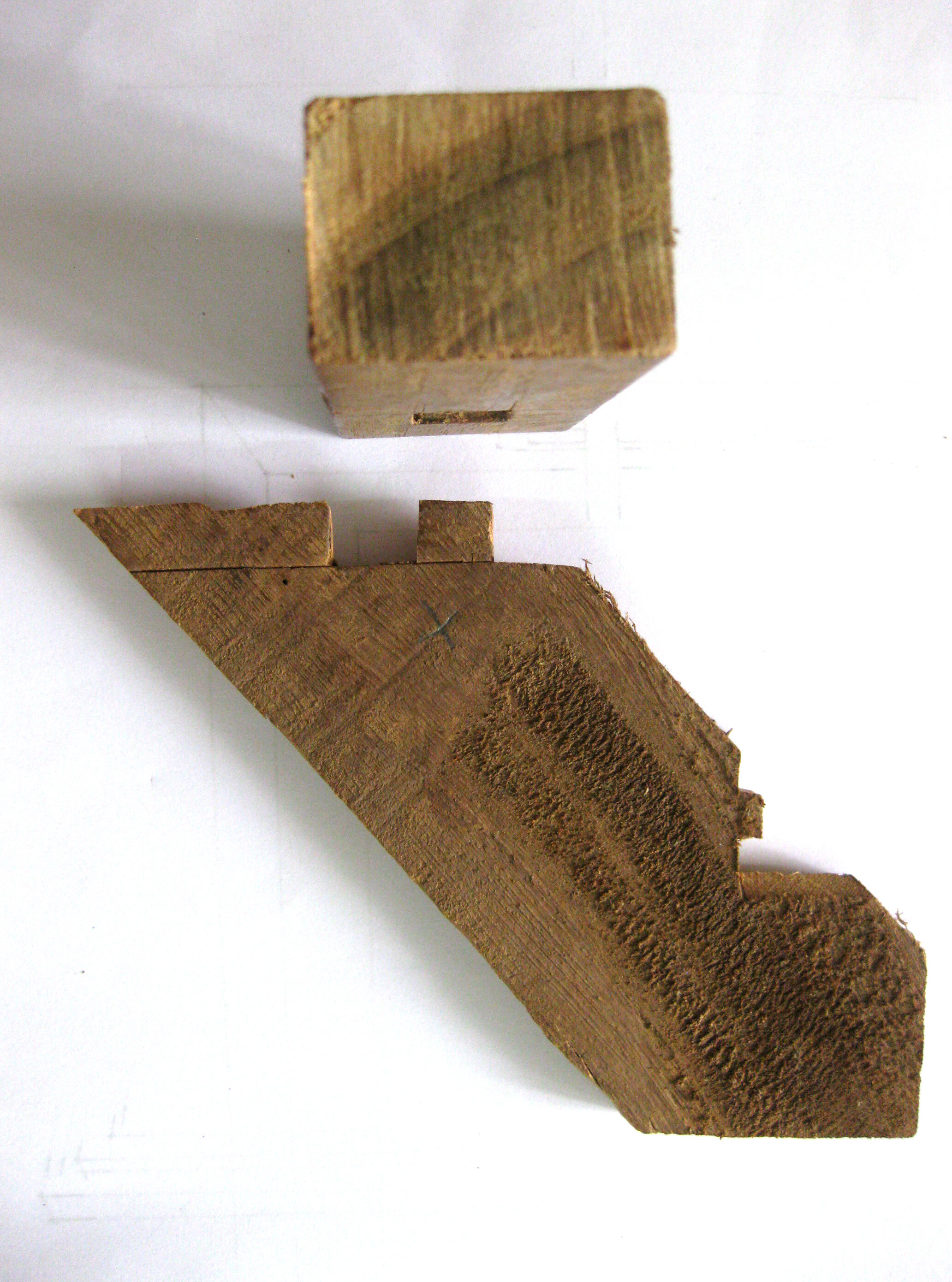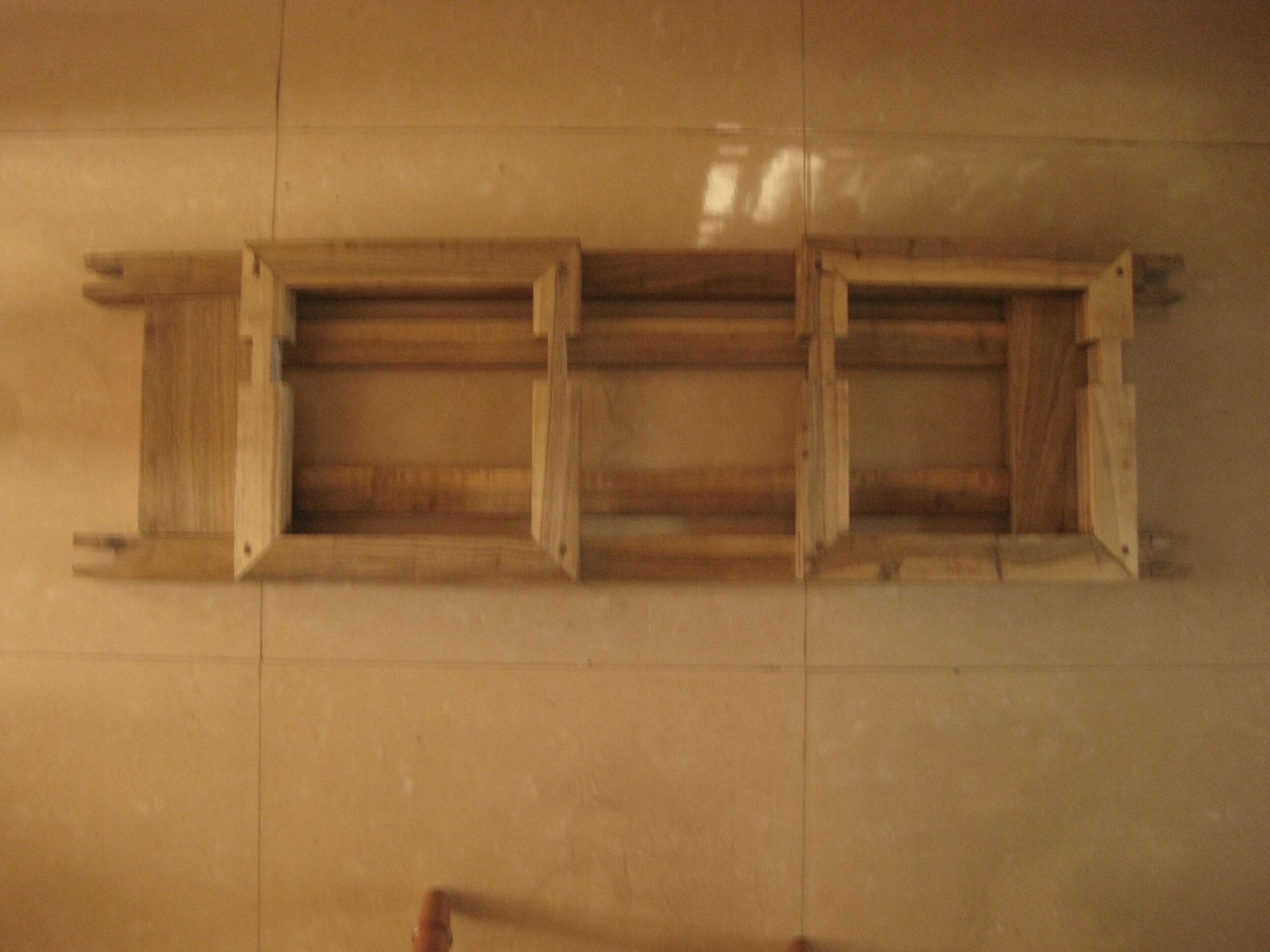Vrdhaki - Self-locking Woodwork
introduction
Being as noted as Kerala has been for its variety, quantity and quality of its trees, it was natural that timber should be utilized by people to a predominant extent for a long period. Its use penetrated every aspect of their lives from architecture to mundane objects in a household. The skill involved here was heightened by one or more of those elements of form, design, texture or rhythm which add art to the craft.
Architecture is a platform where the skill and technique of traditional wood-work could be studied in detail. The clarity and simplicity of the timber architecture of Kerala are the qualities that make it an intriguing experience for anyone. A glimpse of the wonderful traditional buildings of Kerala would show how proportion, geometry and simplicity come together to form a balanced composition in perfect harmony with its surrounding.
The refinement in detail and scale can be traced through the evolution of forms and shapes, over a period of time. Interestingly, they follow a careful set of measurements that have been laid out in an ancient building code of Kerala, Thachushastram.
The wooden temples of Kerala have often been compared with those in Japan. But the similarity mostly lies in the design technology; the details of construction and the norms for proportions are quite different.
The Dalai Lama has commented that in an age of rapid change, there is a risk of ignoring the tried and tested.* Past can be a treasure trove of knowledge; of practices proven to be effective. Learning from it can equip us to find effective solutions to contemporary situations.
Research and analysis of traditional joinery
teak
Colour : Heartwood golden brown or dark brown occasionally with black streaks with a waxy feel, lustrous, sometimes with white glistening deposit, distinct aromatic odour with the smell of leather; sapwood pale yellow or grey, well defined.
Weight : Moderately heavy (Air-dry specific gravity 0.55 - 0.70 with average value of 0.65)
Grain : Straight, sometimes wavy
rosewood
Colour : Purplish brown, medium natural lustre, moderately coarse texture with large pores, open grain
Weight : Very heavy (High air-dry specific gravity of 0.85)
Grain : Mostly straight
During times when external fixtures and fasteners were not in use, stable and sturdy structures were built by manipulating the inherent qualities of wood that made self-locking structures possible. The extent of skill required for such work is reflected in the timeless beauty and elegance of these structures.
Exploiting simple yet efficient joinery, members of a connection in different planes were brought together in a perfect fit.
The roof frame consists of rafters supported on wall plate and ridge. A secondary wall plate(ksudrottara) is fixed by wedges (kila) on top of the main uttara. The rafters rest on this secondary support. The rafters of the roof have tenons cut at an angle and corresponding mortises on the ridge. They are supported on the wall beams using straight tenons. Once all rafters are fixed on the ridge and wall beam, it becomes a self locking structure.
The sturdy door frames used a mitre joint strengthened by a lapped tenon or a dovetail tenon.
traditional woodwork in kerala
The old houses in Travancore invariably consist of four rooms joined together in a rectangular form facing the cardinal points of the compass, with a well defined courtyard in the centre inside. These structures are called nalukettus. The wood-work of the building is solid and substantial.
A palace complex, comprising individual structures are linked by a maze of corridors, colonnades, verandahs and courts; and is enclosed by massive stone walls. The palaces of Kerala had none of the architectural pretensions of costly edifices elsewhere in India - they are imposing in their simplicity, elegance and neatness.
Timber played a conspicuous part in the construction of these houses and palaces. It was used as posts for carrying load and for beams to span openings. Joinery was developed in the form of mortise and tenon, scarfed joints etc. and the timber frame work for roof was developed. Timber was also used for walls, floors and foundation.
Properties of strength, workability and durability of wood were well studied. Also, timber was attributed sanctity. Trees were generally felled only with invocations to God and with pleas to all living beings living on the tree, to seek alternative trees. The log was debarked and brought to the workshop and kept there for 6 months to heal the wounds made by the axe.
After this seasoning, the trees were sawn, cut, planed, turned and finished to form the structural or sculptural member. A variety of tools and techniques for wood working were also developed for ensuring fine work.
Vastu vidya texts give elaborate details of wooden construction for pillars, roof frames, doors etc. Strictly speaking, this is the craft side of Vastu vidya and should not be mistaken as the theory of architecture.
A pillar has its stem between its base and the capital. The base is decorated with pedestal (oma). The capital is decorated wuth bracket (potika). The architrave has a thickness equal to the diameter of the pillar. It is called Uttara - the wall plate or the beam. It supports the weight of the superstructure. It is fixed on the pillar by mortise and tenon joint.
As mentioned earlier, Kerala timber architecture has often been compared with that in Japan. Though a similarity has been proven to exist, their approaches have been found to differ. But it always helps to look at things from different perspectives. Below is a quick peek at a few examples of wooden joinery used in Japan without any external means of fastening.
This dovetail lap joint combines the self-locking quality of the dovetail with the strength of a lap joint . It is commonly used to splice groundsills to buildings.
Often used to join large beams, the thin lapped rod tenon will pass through a post without weakening it and another section of the beam is locked on with square pegs.
Used to splice beams or lintels, rebated oblique scar joint has great tensile strength and resists lateral bending forces. It is complicated to cut and highly regarded by craftsmen.
Both halves of this inserted tenon joint are identical, enabling easier repetitive making for multiple components. The floating tenon locks both halves together. Used for splicing, it has good tensile strength.
Cross stub tenon joint has good rotational and shear resistance but no tensile or bending strength, so it’s used where timber meets in compression.
Tenon seated snake’s head is a very intricate joint and incredibly strong. It self locks and is resistant to the strains of movement and shrinkage. It is also one of the most demanding joints to cut.
INFERENCES
Structural correctness and simplicity are the two most important qualities that mark the traditional wood work of Kerala, much like in any other style or time. This kind of work required a high level of workmanship. In spite of being effective in keeping a structure intact for decades, it is a dying art.
The simplicity and the high level of skill resulting in a perfect fit of different planes lend the qualities of stateliness and dignity to these structures. Very simple locking mechanisms give rise to great strength and durabilty to them.
Considering the fact that it is to be hand done by a skilled carpenter, it can be made in only small numbers. This makes it quite expensive.
Such expensive and innately exquisite work is well suited for and can be afforded by only a tasteful high-end client.
Further steps included iterating ideas, form finalization, making prototypes and then the final product in collaboration with a carpenter.
Approach
• Research and analysis of traditional joinery
• Formulating a theme
• Iterating designs
• Prototyping to check feasibility of the final design
tidbits
Teak, Rosewood and Mahagony are the timbers mainly used in Kerala for furniture.
Teak grown in Kerala (Nilambur) is the most durable due to its very high oil content. Rosewood grown in Kerala is considered to be the second best in the world.
In present times though, 90% of the wood for commercial use is imported from outside India.
The normal water content in timber falls in the range of 50 - 60 % generally. This needs to be brought down to around 10 % by the process of seasoning. In a seasoning plant, fans blow dry heat into sawn timber arranged in such a way as to provide uninterrupted air flow. There is a gradual heating upto 40 - 75 degree Celsius.
There is a sawing wastage of about 10 - 12 %. The wastage is much lesser in high precision imported machines.
Quarter-sawn wood is the most stable. But the wastage is high; the width of the planks are less and hence yield is also less. Parallel sawn timber is also considerably strong, while cross-cut timber is the least strong.
Price range
Teak: Rs. 6000 - 7000 per sft
Rosewood : Rs. 5000 - 20,000 per sft
Mahagony : Rs 1400 - 2000 per sft










































